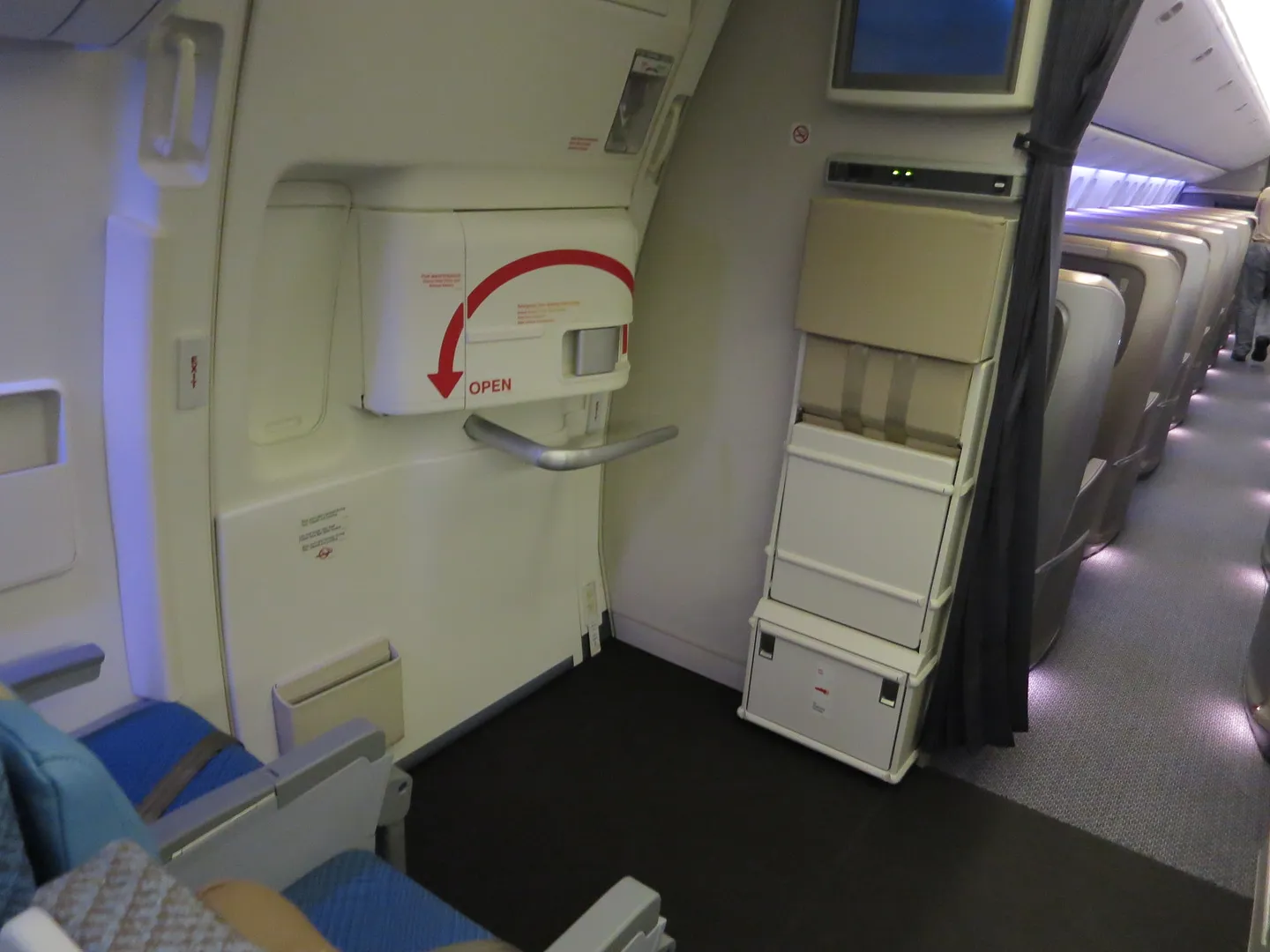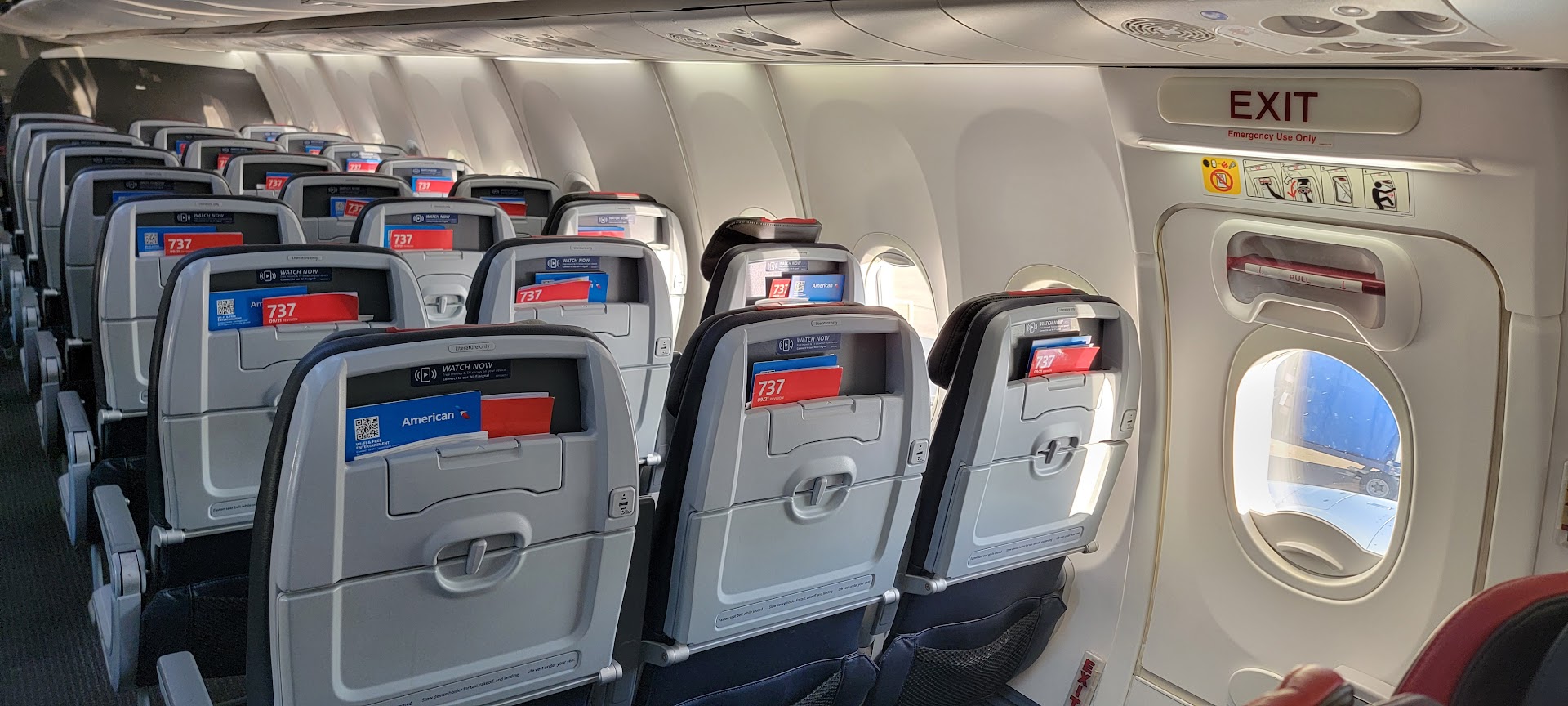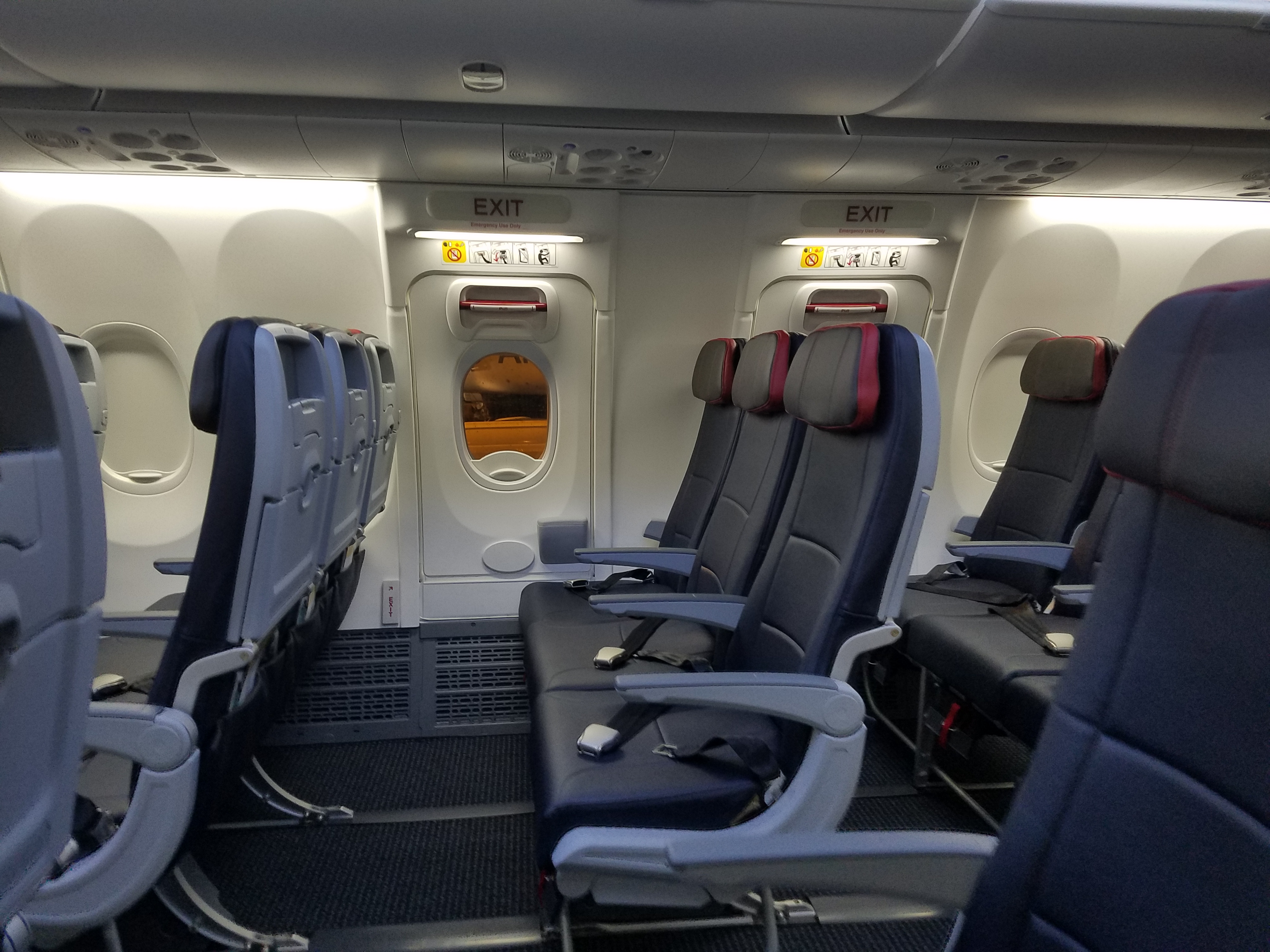Passengers love exit row seats for the extra legroom, but in exchange they’re supposed to be willing and able to assist in an emergency. Crew provide an ‘exit row briefing’ in which each passenger is supposed to acknowledge this.
But what happens when a passenger does acknowledge it, but maybe they aren’t in a position to actually assist?
@AmericanAir can a passenger sitting in an exit row have a foot boot on and able to perform the functions of an exit row in an emergency? AA402 dfw to Phl today pic.twitter.com/TC734LJ5sL
— BelieveNU2030 (@investNU2030) October 5, 2025
In the U.S. (and pretty much everywhere else) exit row eligibility is not just “self‑certification.” The airline is responsible for deciding who can sit there, and crew are expected to verify and, if necessary, re‑seat someone who isn’t “willing and able.” A passenger in a cast or boot is commonly moved.
The FAA rule is explicit: the certificate holder (airline) must determine the suitability of each person in an exit seat. It’s the carrier’s call, not the passenger’s. Disqualifiers include:
- lacking “sufficient mobility, strength, or dexterity in both arms and hands, and both legs”
- inability to understand instructions/crew commands
- being responsible for someone else (e.g., a child).

Before pushback, a crewmember must verify that no exit seat is occupied by someone likely unable to perform the functions. They have to do more than collect a rote “yes.” Visual and verbal assessment of each exit‑row occupant is supposed to happen. The FAA has found flight attendants “coaching” a verbal yes and instead advises asking questions that actually test suitability.
Safety rules like FAA exit‑row criteria are actually a permitted exception to nondiscrimination rules. Airlines may keep someone out of an exit row to comply with safety requirements. Normally you don’t ask for proof of fitness or disability. Here you can make assumptions and that judgment generally isn’t questioned.

In Europe, airlines must have procedures so that only passengers who “appear to be reasonably fit, strong and able” occupy seats with direct access to emergency exits; passengers who would “have difficulty moving quickly” should not be seated there.
In Canada, airlines must have procedures to ensure exit seats are not occupied by passengers whose presence could adversely affect evacuation. Eligibility criteria largely mirror the FAA’s (physical capability, understanding instructions, ability to assess conditions, not responsible for others, etc.).
Here’s what’s actually a bit strange about these rules.
- Passengers don’t get in trouble for not actually helping in an emergency. They have to be able to, but in effect they do not have to.
There have been exit row passengers who failed to help in an emergency. For instance,
- USAir 1493 (LAX runway collision, 1991): The right over wing exit occupant “froze” and didn’t open the exit door. Another passenger climbed over, opened it, and pushed her out. The NTSB report noted the delay at that exit hampered the evacuation.
- American 1420 (Little Rock, 1999): The NTSB evacuation study describes exit row passengers at over wing exits who abandoned or couldn’t not open the door until others stepped in.
I can’t find a single documented case where a passenger was prosecuted for failing to assist in an emergency after they agreed to do so. Civil liability is theoretically possible under negligence theories (negligently failing to perform the duties and thereby causing harm). But that’s just a theory, not actual case law.
- And having someone in an exit row to assist in an emergency is not actually necessary – exit rows don’t need to be occupied for safety reasons and airlines don’t have an obligation to fill those seats.

My view is that this passenger in a boot shouldn’t be in an exit row, and the FAA likely agrees with that.


Gary,
On this one I’m not sure the boot would be a problem. You have to be able to stand, open the over wing hatch and assist.
Might be best to have him out the hatch first.
My biggest concern is some of the obese folks that are wedged into the Emergency Row seat and their ability to effectively help in an emergency.
Yes, the safety rules are often written in blood, lest we forget.
Drama drama drama
Following a ski accident I flew with a boot for six months, often in the exit row and was never questioned. Until you have worn a boot please don’t be so judgmental. The boot merely supports the foot or ankle and, in many cases, is worn for protection to ensure some fat slob doesn’t step on your broken foot. A boot is VERY different from a cast, team.
Lastly, even when I was wearing the boot, I guarantee I was far more capable opening the door than my 85 year old mother who also sits in exit rows or as someone else pointed out, the XXXXLs that also are allowed to sit in these rows (not fat shaming, just fat facting) or the people that are drunk, asleep, etc.
Thanks for policing AA!
Wearing a foot brace for a metatarsal stress fracture can support and protect your foot, allowing you to kick open an exit hatch without causing further injury.
The use of certain assistive devices does not necessarily preclude someone from assisting in an emergency or sitting in an exit row seat.
@Ken A — I take it back. Forget the FAA. Who needs OSHA, either. Let’s all just wear foot braces. Everywhere. Or, better, yet if we brought back medieval plate armor, then we probably don’t even need the safety videos at all. So many problems solved.
Years ago flying SW @ A5 and notice those with early access blue handicap cards. One of those that gets on is a man using crutches to get on the airplane. I get on, take a seat in the exit row and across from me is this gentleman, who has removed a lower leg. I mention to the young flight attendant maybe he shouldn’t be in the exit row. She goes and speaks with another F/A, speaks with the gentleman with his lower leg off and lets me know that the gentleman assured her he would be fine in an emergency. I said that might be the case , but his leg and crutches might be in row 27 by then.
I would suppose the safety factor might come into play if one is in pain ( on meds etc) . Later, wearing it as others have noted it’s an enhanced support device. I use a wrist brace traveling to increase strength. It’s the best.
As unpopular as this might be to some, and as a tall person with long legs who likes sitting in exit rows, I really think airline employees (or at least those trained in onboard safety) should be given priority to sit in those rows when they are regular or deadheading passengers. It just makes sense. I’m sure the logistics of picking seats ahead of time would make this bad in some ways, however.
Of course, I’ve always thought that all air traffic controllers should be allowed to use their credentials to use the TSA precheck lines, also, which they do not, even with their security clearances.
@DaninMCI — Not unpopular at all; in fact, your ‘hot take’ is quite logical. Probably would save lives in an emergency evacuation more-so than any of the rest of us wahoos.
@JOHN — When you say, “early access blue handicap cards’ — do you mean he was a pre-board? If so, is a VIOLATION of Southwest Policy and Procedure. Pre-boards are NOT permitted to sit in the Exit Row.
Large people sitting in an exit row is actually good. They cannot only handle the door and any complications with it, they can literally grab the whiny little people and physically toss them out of the airplane instead of letting them slow down the process.
As for a medically required boot, I have worn one before for a number of weeks. In a good footing area, there is no problem with it. On an airplane wing, it may not flex enough to assure solid footing and the bottom may not grip enough (but leather soled shoes have grip problems also). I don’t believe that it would interfere with opening an exit door on an airplane. Having the extra pitch of the exit row is probably good along with the seats in front not being able to recline.
The scenario just happened on the I’m on. DL2654.
The flight attendant found someone to switch to the exit row. Surprisingly it was a bit of a hard sell. I expected people to jump on the opportunity. I would have if I weren’t already on the bullhead exit row seat.
@IsaacM — Ah, +30 minutes late tonight (‘runway delay’). Glad you got the ‘bullhead’ (bulkhead?), at least. Live it up with a few extra Biscoffs! Safe travels!
@1990 it was a bit late, not sure why, this was a case of everything taking a bit extra time.
The luggage handler at the door was arguing about someone with a scooter type mobility device on whether it can be stored in the closet or if it needs to go into the belly. That slowed us for five/ ten minutes or so but regardless we pushed off much later than that.
Yeah I meant bulkhead. My flight on Monday DL1036 was delayed by three hours but found a seat on the flight an hour later than the original time but unfortunately it was a middle seat all the way in the back. So I did appreciate the bulkhead exit row B seat without a window seat next to it.